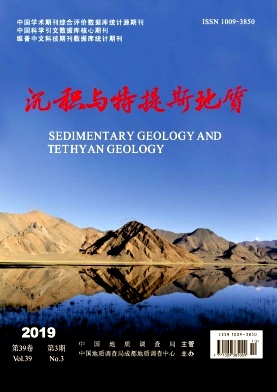YANG Xibing, FU Heng, HE Xiaohu, YANG Jinhai, ZHANG Haiyang. 2019. Cenozoic sedimentary systems and their tectonic-sedimentary evolution in southern uplift zone of the Qiongdongnan Basin. Sedimentary Geology and Tethyan Geology, 39(3): 1-10.
| Citation: |
YANG Xibing, FU Heng, HE Xiaohu, YANG Jinhai, ZHANG Haiyang. 2019. Cenozoic sedimentary systems and their tectonic-sedimentary evolution in southern uplift zone of the Qiongdongnan Basin. Sedimentary Geology and Tethyan Geology, 39(3): 1-10.
|
Cenozoic sedimentary systems and their tectonic-sedimentary evolution in southern uplift zone of the Qiongdongnan Basin
-
1. Research Institute of Zhanjiang Branch, CNOOC, Zhangjiang 524057, Guangdong, China;
-
2. College of Energy Resources, Chengdu University of Technology, Chengdu 610059, Sichuan, China
-
Abstract
The back-arc spreading of the Neo-Tethys resulted in the consumption of the Palaeo-South China Sea and the spreading of the Neo-South China Sea. Subsequent separation of Xisha and Zhongsha microcontinental masses from the South China Continental margin gave rise to the formation and continuous subsidence of the Qiongdongnan Basin. During the deposition of the Yacheng Formation in the southern uplift zone of the Qiongdongnan Basin, the filling-up prevailed over the Basin, and then resulted in the development of the fan delta-shallow shelf sedimentary systems near the source areas. The principal source of detritus lay to the Songnan low uplift and the southern uplift denudational areas. Till the deposition of the Lingshui Formation-Meishan Formation, the combination of tectonic subsidence and global sea-level rising resulted in the expansion of the transgressions, and the development of the shallow shelf deposits in the southern uplift zone. The isolated carbonate platform organic reefs were once developed only in the Xisha (Yongle) uplift zone. The tectonic-sedimentary evolution of the Qiongdongnan Basin and its southern uplift zone took place under the tectonic background of the continuous subsidence of the Basin caused by the consumption of the Palaeo-South China Sea and the spreading of the Neo-South China Sea, as well as the strong influence of the global sea-level falling on the littoral-shallow shelf denudation and filling-up.
-

-
References
|
[1]
|
傅恒,曾驿,周小康,卫哲,吴婷婷,高雁飞,鲁静,珠江口盆地新生代碳酸盐岩形成地质条件[J]. 地质学报,2018,(11):2349-2358.
Google Scholar
|
|
[2]
|
Haq B U, Hardenbol J, Vail P R. Chronology of fluctuating sea levels since the Triassic (250 million years ago to present), Science,1998,235:1156-1166.
Google Scholar
|
|
[3]
|
苏明,姜涛,张翠梅,张成,何云龙,王振峰,琼东南盆地中央峡谷体系东段形态-充填特征及其地质意义[J]. 吉林大学学报(地球科学版),2014,44(6):1805-1815.
Google Scholar
|
|
[4]
|
陆永潮等,南海北部深水区碳酸盐岩沉积体系与分布预测[R]. 北京:中国海洋石油总公司,2014.
Google Scholar
|
|
[5]
|
朱伟林,张功成,杨少坤等,南海北部大陆边缘盆地天然气地质[M]. 北京:石油工业出版社,2007.1391.
Google Scholar
|
|
[6]
|
周鑫,郭正堂,浅析新生代气候变化与大气温室气体浓度的关系[J]. 地学前缘,2009,16(5):15-28.
Google Scholar
|
|
[7]
|
田军,新生代的气候节律:赤道太平洋IODP320、321航次[J]. 地球科学进展,2009,24(12):1357-1361.
Google Scholar
|
-
-
Access History







 DownLoad:
DownLoad: